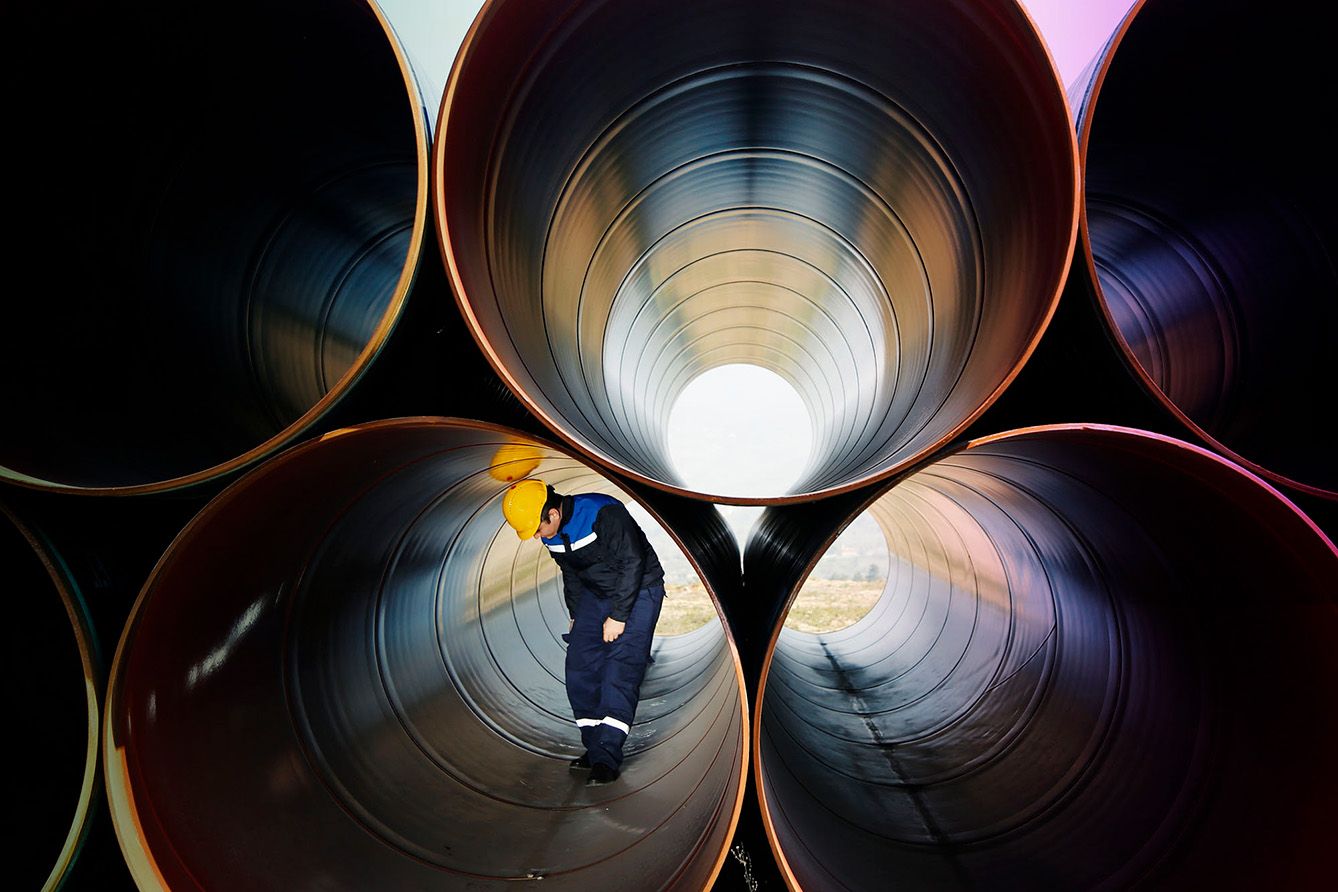With European energy markets spooked by the security situation connected to Russia, and lower than expected levels of European gas in storage, energy prices have recently risen sharply for consumers. However, the crisis has also spurred on the process of energy diversification. A positive outcome from this is that the Gas Interconnection Poland-Lithuania (GIPL) has managed to stay on schedule and became operational on May 1st 2022.
The timing of the gas pipeline becoming operation could not have been better as Russia announced on April 27th that it is immediately suspending gas deliveries to Poland and Bulgaria for their refusal to pay for the gas in rubles instead of euros.
Russia decided to introduce the demand on short notice via a decree unilaterally adopted by President Putin in order to prop up its struggling currency in the face of the wide array of sanctions imposed on the country after its invasion of Ukraine. The case is likely to end up in court and it appears obvious to international experts that Russia’s actions are in breach with the contracts it once signed with the two EU member states.
The new gas pipeline between Poland and Lithuania lets gas flow in both directions. Its completion finally integrated the three Baltic states (Latvia, Lithuania and Estonia) and Finland into the EU gas transmission system. Previously, Baltic countries and Finland were only able to receive pipeline gas from Russia with all the energy security risks that such a situation entails.
Crisis and ingenuity
The ancient Greek Philosopher Plato correctly observed that necessity is the mother of invention. With regards to the tense situation on energy markets over the Russia-Ukrainian crisis (in 2020, nearly a quarter of Russia’s gas exports to the EU of 175 bcm was transported through Ukraine), one could paraphrase Plato and say that “crisis is the mother of ingenuity”. Europe has eight weeks of gas in storage and the risk of a Russian supply cut started a search for alternative suppliers and reciprocal protection measures.
The EU and the U.S. have conducted intense diplomatic activity in recent weeks to guarantee increased gas supplies to Europe through Qatar, Azerbaijan and Australia. Crucial for such an operation would be the capacity of available gas pipelines, interconnectors, underground gas storages and LNG terminals in Europe. It is here that GIPL comes into play, as it helps to alleviate the situation in Poland, the Baltic states, Finland, Ukraine and potentially in other countries of Central Eastern Europe at a time when it is needed the most.
GIPL: A project for the future
The plans for the new pipeline started taking shape with a business case analysis and feasibility study performed between 2011 and 2013. The European Commission quickly realized its importance and declared the construction of the 508 km long pipeline a Project of Common Interest (PCI) for the Union, making it eligible for EUR 306 mln from the Connecting Europe Facility Fund.
The interconnection capacity from Poland to Lithuania is planned to reach 2.4 bcm/year, while the figure will stand at 1.9 bcm/year in the opposite direction. GIPL is able to transport gas arriving to the region through the Polish LNG terminal in Świnoujście and the FSRU facility in the Lithunaian Port of Klaipėda, Lithuania. Starting in the second half of 2022, Norwegian gas will also start flowing to Poland via the Baltic Pipe, further improving the region’s energy security. It is estimated that GIPL capacities cover more than 40 percent of gas demand in the Baltic countries and Finland.
Synergic effects of gas interconnection Poland-Lithuania
On February 10th 2022, the Lithuanian transmission system operator (TSO) Amber Grid announced that it will launch the ELLI project with its Latvian partner, doubling the gas transmission capacity between the two countries. It means that gas flowing through GIPL will have greater access to the Latvian Inčukalns underground gas storage facility transmission capacity between Latvia and Lithuania. Another important feature of GIPL is that it will be possible to adapt parts of its capacity for green hydrogen in the future.
The term has been given to hydrogen generated entirely by renewable energy and which can be used to help limit climate change by decarbonizing sectors that are hard to electrify, such as steel and cement production. The possibilities offered by GIPL are many, but none are more important than increased energy security, especially in a time in which consumers are already turning their wallets inside out due to high energy prices.







